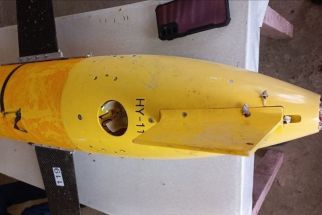Philippines' most expensive fish dying out
TUGUEGARAO CITY, Philippines – Is the ludong, the country’s most expensive and probably most delectable fish that usually spawn during the last quarter of the year, on the brink of extinction?
This may be the case after a preliminary study by the National Fisheries Research and Development Institute (NFRDI) reported the absence of any samples of the Cestraeus plicatilis, said to be the most known ludong fish species, once abundant in the region.
So far, the NFRDI said it has yet to come across samples of such species, fearing that it was dying out, or worst, that it was already extinct, as the Cagayan River as well as downstream of the Abra River are their only known habitats in the country.
Also known as the President’s Fish or Northwest Pacific Salmon and with a high market value of at least P5,000 per kilogram, ludong, listed as one of the world’s most endangered fresh water fishes, is known among gourmets for its delectable taste.
Their species, however, have been at an alarming decline in recent years, prompting the government and private sectors to embark on the “Sagip Ludong” movement here last year.
NFRDI’s fish species expert Dr. Mudjekeewis Santos said of the three known species of ludong, only samples of the two less popular species, Cestraeus oxyrhynchus and Cestraeus goldiei, have been found to be still in existence.
Observers said that in case the C. plicatilis species is proven to have become extinct, this was another sign that the two other ludong species are also on the brink of extinction.
Preservation campaign
The NFRDI study came as the Bureau of Fisheries and Aquatic Resources (BFAR) in the region has been leading the campaign to preserve the fish species by prohibiting harvest during their spawning period from October to January.
Likewise, a proposal had been raised at recent Regional Development Council meetings to increase the fine on catching ludong during their spawning period from a measly P200 since the 1950s to as high as P80,000.
Besides illegal catching, study shows that what contributed to the decline of the fish species are the ongoing controversial dredging activities as well as black sand or magnetite mining along the Cagayan River and its northern coastlines.
- Latest
- Trending






























